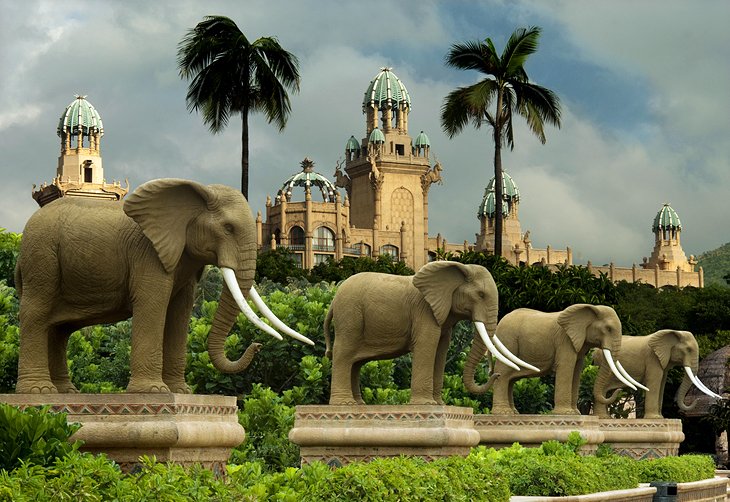What Does Johannesburg North Attractions Mean?
What Does Johannesburg North Attractions Mean?
Blog Article
Getting My Johannesburg North Attractions To Work
Table of ContentsThe Facts About Johannesburg North Attractions RevealedJohannesburg North Attractions for BeginnersSee This Report on Johannesburg North AttractionsJohannesburg North Attractions for BeginnersSome Known Incorrect Statements About Johannesburg North Attractions Indicators on Johannesburg North Attractions You Need To KnowThe Basic Principles Of Johannesburg North Attractions
However you need to maintain safety and security in mind and travelers must stay sharp in any way times when in unfamiliar surroundings. Talk to the locals when you are in community to discover the area you are remaining in. Johannesburg North attractions. When on the road (this doesn't relate to buying malls and various other secure settings) finest basic advice is to try your ideal to look like a regional and to stay clear of displaying any type of kind of wealth
The Buzz on Johannesburg North Attractions
Teacher Revil Mason O. J. (Thomson, 1946) checked out the Witwatersrand's pre-colonial background. His historical work blew up the 'em pty land' misconception, according to which the region was without human habitation before the arrival of European settlers. In his publications Prehistory of the Transvaal: A Record of Human Activity (1962) and Beginnings of Black Individuals of Johannesburg and the Southern Western Central Transvaal AD 3501880 (1986 ), Professor Mason showed the degree of social and economic growth in the location before Europeans set foot right here.

More About Johannesburg North Attractions
In 1878, David Wardrop located gold in quartz capillaries at Zwartkop, north of Krugersdorp. In 1881, Stephanus Minnaar came throughout gold on the farm Kromdraai, near the Cradle of Mankind.
In March 1886, a protrusion (soon to be called the Key Coral reef) was found, quite luckily, on Gerhardus Oosthuizen's ranch Langlaagte. Some say that the Lancastrian coal miner George Walker uncovered this coral reef. Another travelling English miner, George Harrison (who had actually formerly functioned in Australian mines) obtained a prospecting licence in regard of Langlaagte in May 1886.
He decided to carry on in a mission for greener fields, and disposed of his Langlaagte insurance claim for the handsome amount of 10. Alas: beneath lay the richest goldfield ever found. The exploration of this rich auriferous reef prompted a gold thrill that signified completion of agrarian tranquillity in read what he said the southern Transvaal.
It would, within 6 years, come to be the biggest community in southerly Africa. Within a years, it would certainly make the Z. A. R. until then an anarchical and insolvent little state the most affluent nation in Africa. By the millenium, the Z. A. R. was to exceed Russia, Australia and the USA of America to come to be the globe's leading gold manufacturer, producing greater than a quarter of the world's gold.
All about Johannesburg North Attractions
It was known as Ferreira's check over here Camp, called after Colonel Ignatius Ferreira. He was a Boer traveler upon whom the British authorities had presented the condition of Buddy of the Most Distinguished Order of St Michael and St George (qualifying him to the post-nominal letters C. M. G.) in gratefulness for his function in the battle that had deposed the Pedi king Sekhukhune in 1879.
Two other camps were developed: Meyer's Camp on the farm Doornfontein, and Paarl Camp. The latter was nicknamed Afrikander Camp; many individuals from the Cape Nest worked out there.

The 8-Minute Rule for Johannesburg North Attractions
This name obtained money by word of mouth, such that the State Secretary affirmed the name to the Mining Commissioner on 9 October 1886. Stands in the town were auctioned on 8 December 1886. While some stands were sold for 10, others were torn down for as low as sixpence.
Two years later, these erven were to transform hands for as long as 750 each. The tented camps diminished as a dorp of corrugated iron buildings developed and expanded north of the mines situated along the Key Coral Reef Roadway. Locations such as Jeppe's Town (where working-class immigrants erected their dwellings) and Doornfontein (where the affluent new 'Randlords' began to construct their opulent homes) were soon included to the ever-expanding map of the town.
Unknown Facts About Johannesburg North Attractions
Apart from the street names, there were no signs of Johannesburg being positioned in a Dutch-speaking country. Years later on, C. W. Kearns O. J. (one of the first kids enrolled at St John's College in 1898) would certainly recall: 'A strange truth concerning Johannesburg was that, although it was in the [Boer Republic], almost every person spoke English and also the Government servants attended to one in English, unless they were first attended to in the Taal (or Reduced Dutch)'.
Britain had a rate of interest in making certain optimum problems for gold manufacturing on the Witwatersrand, and that the gold was exported to London instead than Berlin a critical provided all the extra clamant by the Z. A. R.'s raising toenadering with Germany. Mine proprietors got on a crash training course with Head of state Kruger, whose policy of monopolistic concessions (commonly given to his cronies) avoided mining companies from procuring materials of materials (especially dynamite) and work on their own, cheaper terms
Rumored Buzz on Johannesburg North Attractions
In 1890, the Volksraad had actually restricted the franchise to white guys that had resided in the Z. A. R. for fourteen years or longer, hence invalidating the majority of the immigrants (who happened to be the significant contributors to the fiscus). Anxiety for the ballot was a mere pretense for advertising a different program; the majority of uitlanders regarded themselves as short-term site visitors and had no purpose of remaining in the Z.
Report this page